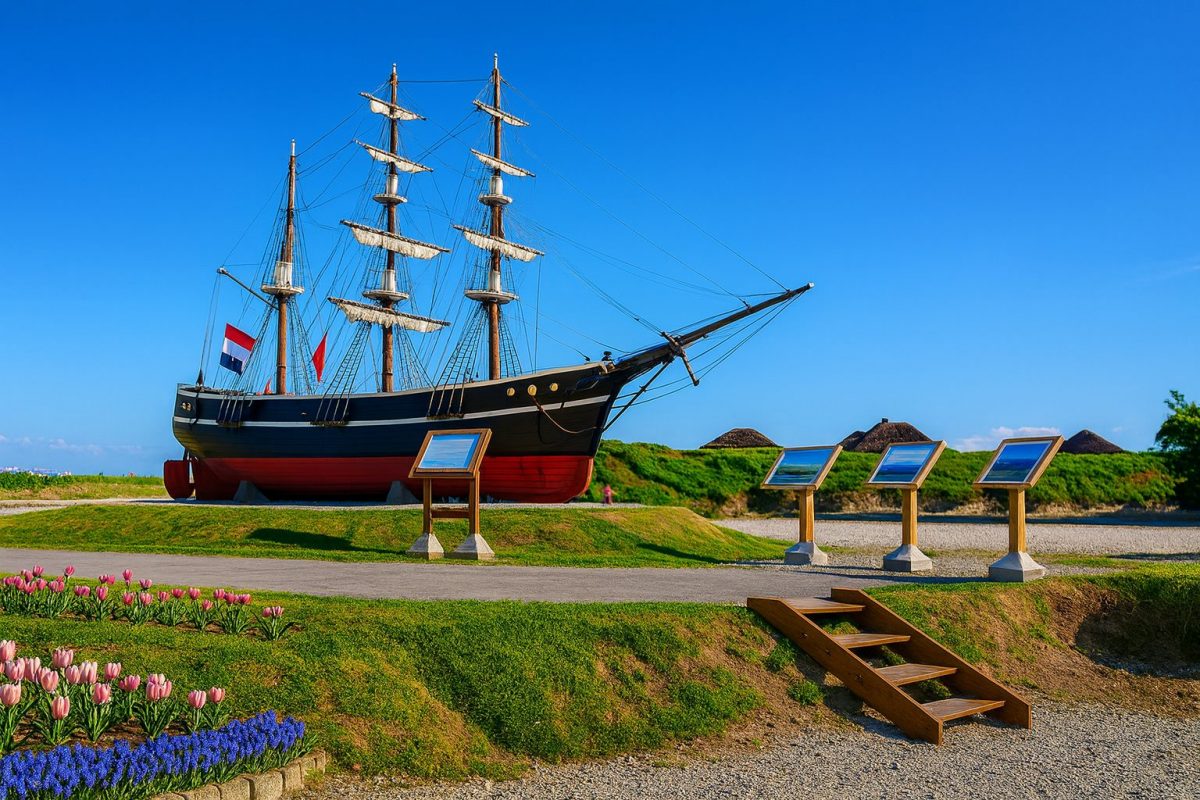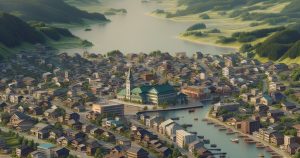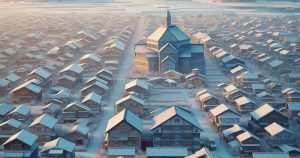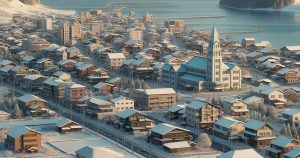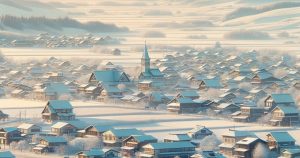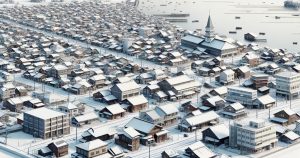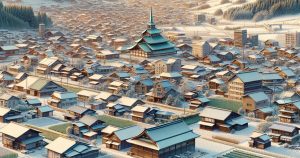| population | 3,423 peoples |
|---|---|
| area | 221.86 km² |
| population density | 15.4 peoples/km² |
Kikonai Town, located in the southwestern part of Hokkaido’s Oshima Peninsula, serves as the gateway to Hokkaido through the Seikan Tunnel. Facing the Tsugaru Strait, this coastal town is deeply rooted in both Ainu traditions and the pioneering spirit of the Meiji era. The name “Kikonai” comes from the Ainu word “Ririonai,” meaning “river where waves enter,” referring to the tidal flow that once caused the river to reverse its direction. Since ancient times, Kikonai has flourished as a key transportation hub, and today, it remains vital as a junction between the Hokkaido Shinkansen and the South Hokkaido Railway Line.
The town’s economy is based on agriculture and fisheries. Dairy farming is especially prominent, producing rich milk and cheese products, while the nearby Tsugaru Strait provides an abundance of scallops, squid, and sea urchins. Local residents live in harmony with nature, cherishing the traditions of the Ainu people and using the Hokkaido dialect in their everyday lives.
Every spring, the “Kikonai Sakura Festival” paints the town pink with cherry blossoms, while in the harsh winter, the famous “Kanchu Misogi Festival” (Midwinter Purification Ritual) draws crowds who come to witness men purifying themselves in icy seawater. These events reflect the town’s deep spirituality and cultural richness. Kikonai is a warm, nature-rich town where history and modern life coexist beautifully.
CULTURE & TRADITIONS
Kikonai Town preserves the cultural layers of both the indigenous Ainu and the Japanese settlers who began developing the region in the Edo and Meiji periods. The most symbolic event is the “Kanchu Misogi Festival” at Sogawa Shrine, held every January. Participants, wearing only white robes, perform purification rituals in the freezing waters of the Tsugaru Strait, praying for a good fishing season and community well-being. This sacred ritual is officially designated as a cultural heritage of the town.
In spring, the “Kikonai Sakura Festival” celebrates the blooming cherry trees along the Kikonai River. The festival includes food stalls, local produce markets, and evening illuminations. Throughout the year, the people of Kikonai maintain a lifestyle closely tied to nature, upholding dialects, customs, and crafts passed down through generations. It is a community where the sea, mountains, and culture harmoniously intertwine.
LOCAL SPECIALTIES
- Kikonai Milk: Fresh milk produced from locally raised dairy cows, pasteurized at a low temperature to preserve its natural flavor. It’s also used in local cheese and yogurt production.
- Kikonai Rice (Nanatsuboshi variety): Grown in cold, mineral-rich soil with pristine water sources. The rice has a natural sweetness and glossy texture, loved throughout southern Hokkaido.
- Kikonai Wine: Small-scale vineyards in and around the town produce elegant wines that capture the sea breeze’s mineral tones — a true coastal terroir.
- Tsugaru Strait Scallops: Harvested at Kikonai Port, these plump scallops are prized for their sweetness and firm texture.
- Kanrinmaru Kelp: High-quality kelp harvested near Saraki Cape, named after the historic ship “Kanrinmaru” that sank offshore in 1871. Used widely in soups and traditional dishes.
ANNUAL EVENTS
- Kanchu Misogi Festival (January): A centuries-old purification ritual held at Sogawa Shrine, where participants enter the icy sea to cleanse their spirits. It symbolizes courage and devotion.
- Kikonai Sakura Festival (April): Cherry blossoms line the Kikonai River, creating a pink tunnel of petals. Local food, performances, and illuminations attract visitors from all over southern Hokkaido.
- Kanrinmaru Festival (August): Held at Saraki Cape to honor the legendary ship Kanrinmaru. The event features taiko drumming, local food stalls, and fireworks by the sea.
- Kikonai Winter Illumination (December): The area around Kikonai Station is lit up with thousands of LED lights, offering a magical winter spectacle.
ACCESS
- By Train: Take the Hokkaido Shinkansen to Kikonai Station (about 15 minutes from Shin-Hakodate-Hokuto, 4 hours from Tokyo).
- By Air + Train: From Hakodate Airport, take a 20-minute car or bus ride to Hakodate Station, then the South Hokkaido Railway (approx. 50 minutes) to Kikonai.
- By Car: About 1.5 hours from Hakodate via Route 228, or 5 hours from Sapporo via the Hakodate-Esashi Expressway.
- By Ferry: From Aomori to Hakodate via the Tsugaru Kaikyō Ferry (approx. 3 hours 40 minutes), then drive or take a train to Kikonai.
TOURIST SPOTS
- Michi-no-Eki Misogi-no-Sato Kikonai – A roadside station near Kikonai Station featuring a tourism center, local product shop, and restaurant. It’s the best place to start your visit.
- Kikonai Town History Museum “Ikarin-kan” – Showcases the town’s development, Ainu heritage, and the Kanrinmaru ship’s history.
- Sogawa Shrine – The spiritual heart of the town and home to the Kanchu Misogi Festival. The shrine grounds are peaceful and rich in history.
- Saraki Cape – The site of the Kanrinmaru shipwreck. Offers panoramic ocean views and colorful tulip fields in spring.
- Kikonai View Onsen Notoya – A scenic hot spring surrounded by nature. The outdoor baths overlook the Tsugaru Strait, providing true relaxation.
